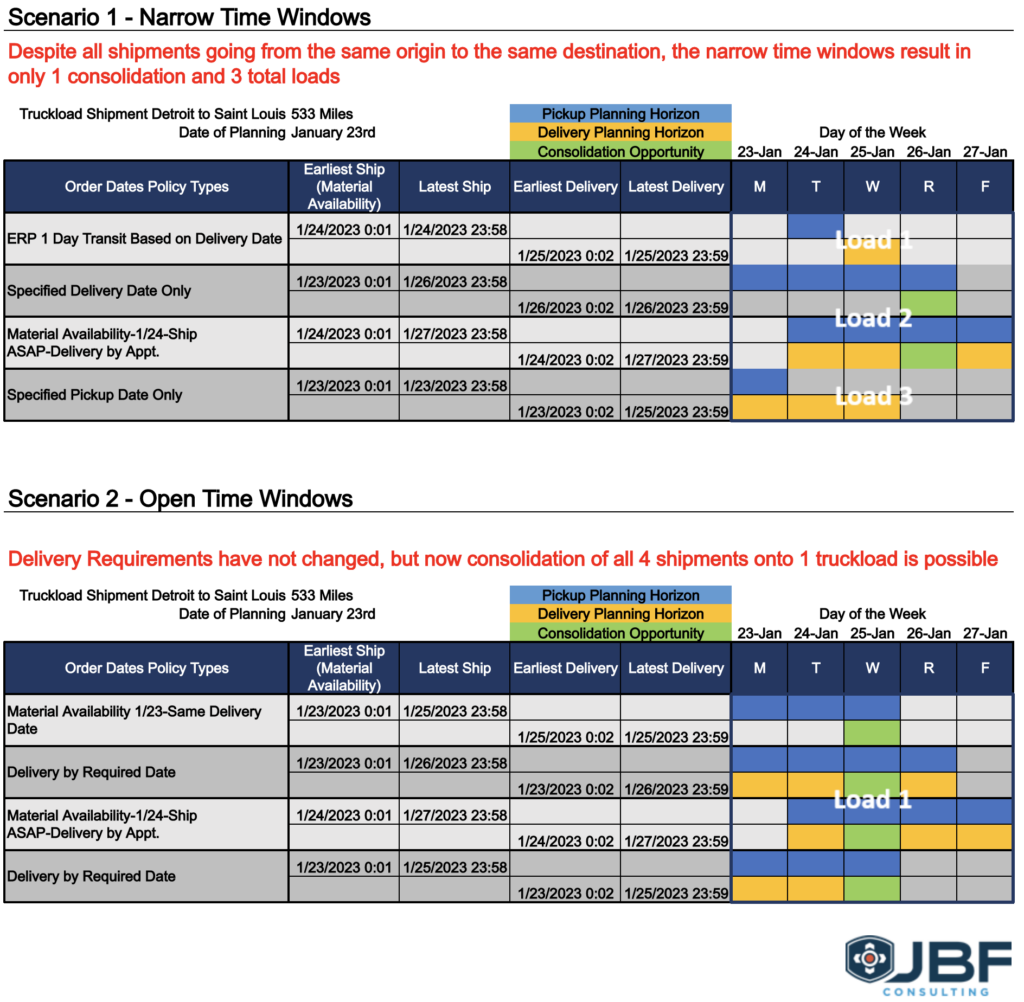A multitude of data factors complicate today’s supply chains. Order Dates are one of the primary—and trickiest—data elements that need to be addressed. What used to be a simple process of receiving raw materials, manufacturing, and the distribution of finished goods has become more nuanced, requiring significant industry knowledge and experience to create optimal solutions.
Details in the Data
What important factors should you prioritize during your Design, Integration, and Testing to ensure the best ROI possible? Are you paying enough attention to your data?
For the functional application and utilization of a TMS, real world operational constraints are often skipped through like a check box for the sake of a systems implementation. This typically leads to an insufficient focus on the data itself.
Let’s take a deeper dive into a piece of data that tends to cause a host of issues if not thoroughly vetted during design: Order Dates.
TMS Success Begins Here
IT and integration groups know dates are a required “field”, part of the “fuel” that makes a TMS “Go”. However, for a TMS to be successful, deeper discussions are generally required to make the best use of your new planning and execution platforms.
At first glance, questions about dates and planning horizons seem simple enough to answer:
- When are my materials or finished goods ready to ship?
- What are the Customer Service or Ordering Cutoffs?
- What are the expected Order Lead Times?
- How do Production Schedules and/or Holidays impact shipping?
- When do they need to deliver to the customer?
Take the above question “When do they need to deliver to the customer?”
There are several follow up questions that need to be asked in order to truly understand the requirements and associated risks such as:
- Is this date accurate and readily available in a system?
- Can the date represent alternative policies, such as “ship by this date” instead of deliver?
- How many versions of customer specific date requirements are there?
Information Gathering
The range of topics related to dates can become much more impactful, with a wide range of information that needs to be gathered. Consider these additional questions:
- Do your products or raw materials experience any drastic swings to projected availability dates?
- Are there seasonal impacts that frequently disrupt production schedules?
- Do you depend on materials received on a given day, to be available to ship on the same day?
- Are manual changes often required to your transportation plans due to materials availability, production capacity, or distribution center throughput?
- How Frequently and to what scale are these changes required?
"For a TMS to be successful, deeper discussions are generally required to make the best use of your new planning and execution platforms."
Look For Consolidation Opportunities
We recently worked with a client that operated in the automotive and industrial space, and they had fifty different order date policies across their portfolio of business.
Our solution architect worked with the business leads to make recommendations to dramatically reduce the number of polices. Then through a concentrated effort by the project implementation team, a change management effort was made to ultimately select fifteen core policies, reducing the complexity of integrations required and potential to combine orders on the same truckload.
As a result of streamlining the order date policies, additional consolidation could occur across multiple orders, while still honoring core customer pickup and delivery requirements.
The table below is an example of how changes to order date policies can increase consolidation opportunities.
Almost any well thought out TMS implementation can deliver exceptional transportation solutions. However, failure to consider these types of questions during design can leave your post implementation results in a state of constant workaround, have a negative impact on expected ROI, and missing out on expected transportation savings and/or positive labor impacts.
"Through a concentrated effort by the project implementation team, a change management effort was made to ultimately select fifteen core policies, reducing the complexity of integrations required and potential to combine orders on the same truckload."
Conclusion
Identifying the right TMS Technology Partner to fit your needs is critical to overcoming data hurdles. You’ll want to work with a partner with significant implementation and industry experience that helps identify and resolve your data needs, one that will know the questions to ask and make sure you get the benefits you are expecting.
A good partner will be there to help you select the right TMS, develop and execute your implementation Project Plan, and execute through the phases of Design, Build, Test, and Deployment, delivering your organization’s desired results.
Meet the Author
Adam Gray is a Supply and Logistics Professional with 25+ Years of experience in the industry. His career started in Brokerage and Procurement, expanding to Fleet Operations, Warehousing, Transportation, Network Design, and Systems Implementation. When not solving Supply Chain issues, Adam can be found fishing and playing music as frequently as possible.
About JBF Consulting
Since 2003, we’ve been helping shippers of all sizes and across many industries select, implement and squeeze as much value as possible out of their logistics systems. We speak your language — not consultant-speak – and we get to know you. Our leadership team has over 100 years of logistics and TMS implementation experience. Because we operate in a niche — we’re not all things to all people — our team members have a very specialized skill set: logistics operations experience + transportation technology + communication and problem-solving skills + a bunch of other cool stuff.
RELATED POSTS
ADDITIONAL RESOURCES
Best Practices Through Expert Partners
How Much ROI Can You Realize From Your TMS Implementation
First Time TMS Implementation for Automotive and Industrial Battery Manufacturer
Fundamentals of a Successful Transportation Management System
Buyers Guide to Transportation Management Systems (white paper)
🔹 🔹 🔹 🔹 🔹 🔹
Subscribe to the The Digital Logistician
Sign up for our Monthly Email Bulletin
Follow the JBF Company page on LinkedIn
Download our white papers & ebooks


